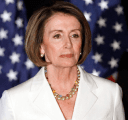Education

In today’s interconnected world, global trade has become a cornerstone of economic growth. From the movement of goods and services to the integration of technology in supply chains, global trade impacts almost every industry. For investors, this presents a unique opportunity to capitalize on emerging trends, geopolitical shifts, and advancements in logistics. By understanding these key trends and positioning your portfolio accordingly, you can take advantage of the opportunities that global trade offers.
In this blog, we’ll explore the key drivers behind global trade, the industries that stand to benefit, and how to incorporate global trade into your investment strategy—before taking a deeper dive into one specific market that’s gaining traction: Argentina.
Key Drivers of Global Trade Growth

Global trade is evolving rapidly, driven by several factors that create new opportunities for savvy investors. Here are the primary forces shaping the future of global trade:
1. Technological Advancements
The digitalization of supply chains, advancements in logistics technology, and the rise of automation have streamlined global trade operations. Blockchain, artificial intelligence (AI), and Internet of Things (IoT) technology are making supply chains more transparent and efficient. These advancements help reduce costs, increase speed, and improve security in international transactions, opening up new investment opportunities in tech and logistics sectors.
2. Geopolitical Shifts
Trade agreements and geopolitical relationships directly impact global trade flows. Recent free trade agreements between countries and regions (e.g., USMCA, EU-MERCOSUR) have reshaped how goods and services move between nations. Investors should be mindful of these shifts, as they can create new opportunities in regions that were previously overlooked or undervalued.
3. E-commerce Boom
Global e-commerce continues to surge, with businesses and consumers relying on international trade to meet demand. With the rise of cross-border retail, companies involved in shipping, logistics, and payment processing stand to benefit significantly. Major players like Amazon, Alibaba, and Shopify are expanding their global reach, driving further growth in this sector.
Key Sectors Benefiting from Global Trade
There are several industries that are particularly well-positioned to capitalize on the future of global trade. These sectors offer strong growth potential and diversification opportunities for investors:
1. Shipping and Logistics
As the backbone of global trade, shipping and logistics companies are integral to the movement of goods around the world. Companies that innovate and adapt to supply chain challenges—such as delays, labor shortages, or changing regulations—are poised to thrive. Investing in logistics giants or ETFs focused on transportation and infrastructure is one way to gain exposure.
2. Commodities
Global trade is a major driver of commodity demand, from energy (oil and gas) to agriculture (grains, livestock). With growing populations and rising consumption, global demand for these goods continues to rise, making the commodities sector a vital component of international trade. Investing in commodity-focused companies, ETFs, or mutual funds can provide strong returns as demand grows.
3. Technology
As global trade becomes more digitized, technology companies that facilitate trade—whether through software, automation, or logistics platforms—are critical to the ecosystem. Investing in tech companies involved in international commerce offers exposure to a high-growth sector tied to the future of trade.
Risks and Opportunities in Global Trade
While the opportunities in global trade are vast, investors must also navigate several risks:
1. Geopolitical Tensions
Trade wars, tariffs, and sanctions can disrupt trade flows and cause volatility in markets. For example, tensions between the U.S. and China have impacted supply chains, causing shifts in where companies source materials and manufacture goods. It’s important to monitor global political landscapes and understand how shifting policies can affect your investments.
2. Currency Fluctuations
Global trade involves transactions in various currencies, making exchange rate fluctuations a risk factor. Companies that rely heavily on imports or exports can see their profitability affected by currency swings. Consider hedging against currency risks by investing in assets that are less impacted by these fluctuations or using financial instruments like currency ETFs.
How to Build a Global Trade Investment Strategy
To take advantage of the opportunities in global trade, consider the following approaches when building your investment strategy:
1. Diversify Through ETFs and Mutual Funds
One of the simplest ways to gain exposure to global trade is through ETFs and mutual funds that focus on international markets or sectors like shipping, logistics, and commodities. These investment vehicles offer diversification, reducing the impact of volatility in any single region or industry.
2. Invest in Emerging Markets
Emerging markets play an increasingly important role in global trade as they experience rapid growth and industrialization. Countries like India, Brazil, and Mexico have growing consumer bases and expanding trade relationships that make them attractive for international investors.
Why Argentina is a Key Emerging Market for Global Trade Investment
Now, let’s dive into one specific emerging market that’s attracting attention: Argentina. As one of South America's largest economies, Argentina offers significant opportunities for investors looking to capitalize on global trade trends, particularly in the agriculture, energy, and tech sectors.
Argentina's Role in Global Trade
Argentina is a leading exporter of agricultural products like soybeans, wheat, and corn, making it a critical player in the global food supply chain. The country is also home to significant natural resources, particularly in energy (oil, natural gas) and mining (lithium, gold). This rich resource base makes Argentina an attractive target for investors focused on commodities and natural resources.
Introducing Our Investment Strategy: ‘Investing in Argentina’
To help investors tap into Argentina’s potential, we’ve developed a balanced and diversified strategy focused on providing exposure to key sectors within the country.

What does this strategy involve?
Our ‘Investing in Argentina’ strategy is designed to spread risk while capitalizing on growth opportunities in Argentina’s diverse economy. Here’s how it works:
Diversified Allocation: This strategy spreads your investment evenly across eleven different Argentine stocks, with each stock receiving an equal allocation of 9.09% of the total investment.
Sector Diversity: The selected stocks represent a variety of sectors, including agriculture, energy, and technology—three of Argentina’s most promising industries.
Rebalancing Frequency: The portfolio is reviewed and rebalanced every 30 days to ensure it remains aligned with market conditions and growth trends. This systematic approach ensures that the portfolio adapts to any shifts in Argentina’s economy or trade conditions.
Time Frame: The strategy is designed to be implemented over a 30-day period, allowing investors to capitalize on short- to medium-term opportunities while maintaining flexibility.
This balanced approach aims to reduce risk while maximizing the potential for returns, giving you exposure to some of Argentina’s most promising companies without being overly concentrated in any single sector or stock.
Why Choose a Diversified Strategy?
Diversification is key when investing in emerging markets like Argentina, where political and economic volatility can lead to rapid shifts. By spreading your investment across multiple sectors and companies, this strategy helps manage risk while providing the potential to capture the upside in a range of industries.
Risks to Consider When Investing in Argentina
Like any emerging market, Argentina comes with its share of risks:
1. Currency Volatility
The Argentine peso has been historically volatile, which can impact the value of local investments. Investors should be prepared for currency fluctuations and consider hedging their investments against currency risk.
2. Political Instability
Argentina’s political landscape can be unpredictable, and policy shifts—such as changes in foreign investment laws or trade agreements—can affect investment returns. Staying informed and diversifying your portfolio can help mitigate these risks.
Conclusion: Combining Global Trade Trends with a Focus on Argentina
Global trade offers exciting opportunities for investors, with advancements in technology, shifting geopolitics, and booming e-commerce driving future growth. As an emerging market, Argentina presents unique opportunities to capitalize on these trends, particularly in sectors like agriculture, energy, and technology. By taking a strategic and informed approach—and leveraging our Investing in Argentina strategy—you can unlock the potential of both global trade and emerging markets like Argentina.
Disclaimer: The information presented is for educational purposes only and not an offer or solicitation for any specific investments. Investments involve risk and are not guaranteed. Consult with a financial adviser before making any investment decisions. Past performance does not guarantee future results.
Automate any portfolio using data-driven strategies made by top creators & professional investors. Turn any investment idea into an automated, testable, and sharable strategy.





